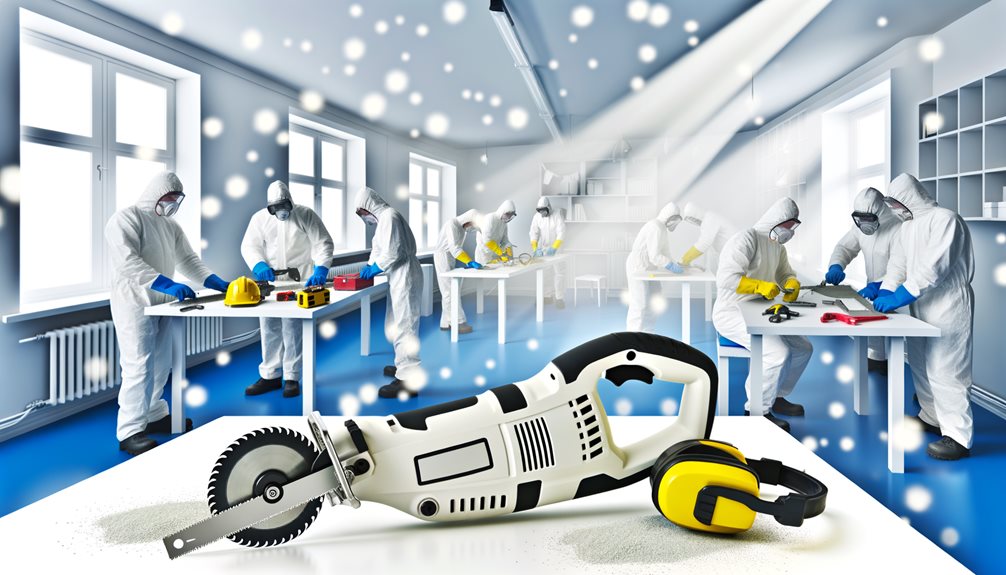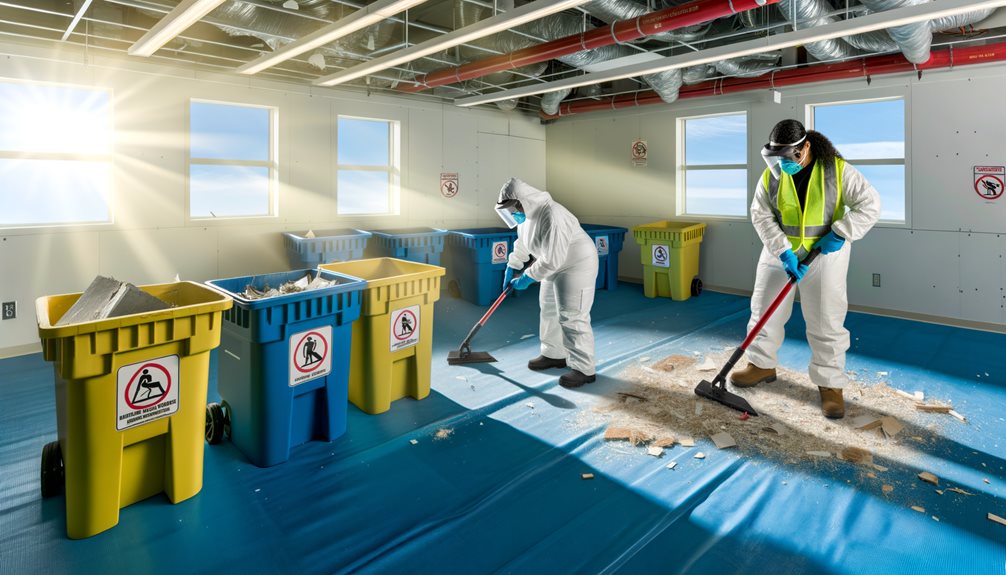When you’re tackling modern renovations, safe interior demolition is essential. If you need home interior demolition in Portland, OR, start with a thorough site assessment to identify structural elements and potential hazards. Establish clear safety protocols, including PPE requirements and appointing a safety officer. Choose the right tools for each material and dismantle structures methodically. Don’t forget about debris management; use recycling and licensed disposal services. Ensuring safety and efficiency throughout requires attention to detail at every step – are you ready to dive deeper?
Conducting a Comprehensive Site Assessment
Before initiating any interior demolition project, conducting a thorough site assessment is essential to secure safety and efficiency.
Begin by identifying structural elements, such as load-bearing walls and support beams, to prevent unintentional damage. Utilize architectural blueprints to confirm these details.
Inspect the site for hazardous materials like asbestos, lead, or mold, and arrange for professional abatement if necessary.
Evaluate electrical systems, plumbing, and HVAC components to prevent disruptions or hazards. Verify all utility disconnections prior to commencing demolition activities.
Document existing conditions with photographs and detailed notes for reference.
Assess potential access and egress routes to confirm they comply with safety standards.
Conduct a risk analysis to identify potential hazards, and develop a mitigation plan to address them effectively.
Securing the Work Area and Establishing Safety Protocols
Once you’ve completed the site assessment, it’s essential to secure the work area to guarantee the safety of everyone involved.
Begin by installing sturdy barriers and signage to prevent unauthorized access. Make sure all entrances are clearly marked with hazard warnings.
Next, implement a thorough safety protocol, detailing emergency procedures, communication plans, and first aid availability. Assign a safety officer to oversee compliance and conduct regular briefings on potential risks.
Personal protective equipment (PPE) like hard hats, gloves, and safety goggles should be mandatory. Maintain clear, unobstructed pathways for evacuation.
Regularly inspect the site for loose debris or structural weaknesses. By taking these proactive measures, you’ll minimize accidents and establish a secure, controlled environment for your demolition project.
Selecting the Right Tools and Equipment for the Job

With the work area secured and safety protocols in place, focus shifts to selecting the appropriate tools and equipment necessary for a safe and efficient demolition process.
Begin by evaluating the materials involved—drywall, wood, or metal—each requiring specialized tools. For drywall, utilize utility knives, reciprocating saws, and pry bars to guarantee clean cuts and reduced dust. For wood demolition, opt for sledgehammers and power saws that offer precision and control. If metal is present, consider metal-cutting saws and angle grinders.
Equip yourself with personal protective equipment (PPE) such as gloves, goggles, and respirators to guard against hazards. Confirm all tools are in good condition and maintain regular inspections to prevent malfunctions.
Select equipment suited to task size, minimizing risk while maximizing productivity.
Dismantling Structures With Precision and Care
As you begin dismantling structures, it’s crucial to approach the task with precision and care to guarantee safety and efficiency. First, assess the structural components thoroughly, identifying load-bearing elements and potential hazards. Use detailed plans to guide your process, ensuring alignment with architectural blueprints.
Secure the area to prevent unauthorized access and minimize injury risks. Equip yourself with personal protective equipment, including hard hats, gloves, and safety goggles.
When removing components, proceed systematically. Start from the top and work downwards, carefully detaching materials to reduce stress on remaining structures. Use cutting tools adeptly, maintaining control to avoid accidental damage.
Constantly evaluate your environment for stability, adjusting your methods as needed. Maintain clear communication with your team to coordinate efforts effectively, ensuring a safe demolition process.
Managing and Disposing of Demolition Debris Responsibly

Having meticulously dismantled the structures, your next task is to manage and dispose of the demolition debris responsibly. Prioritize safety and environmental standards throughout this phase.
First, segregate materials for recycling: separate metals, concrete, and wood. This minimizes landfill impact and promotes sustainable practices.
Second, use proper containment**** methods. Utilize heavy-duty bags or bins to prevent debris from contaminating the surroundings. This reduces hazards and keeps the site orderly.
Third, employ licensed disposal services****. Verify that the waste hauler complies with local regulations for hazardous materials. This guarantees legal compliance and community safety.
Evaluating Project Progress and Making Necessary Adjustments
To guarantee your demolition project stays on track, regularly evaluate its progress and make necessary adjustments.
Begin by reviewing your initial plan and timeline. Compare current achievements against milestones to identify any discrepancies. Conduct safety audits to confirm all workers adhere to protocols and equipment functions correctly.
If you notice deviations, examine their root causes and implement corrective actions immediately. Utilize project management software to track hours, costs, and material usage effectively. This data-driven approach lets you adjust resource allocation, preventing delays.
Communication is vital; hold frequent meetings to discuss findings and gather input from your team. Address potential safety hazards promptly to maintain a secure environment.
As you commence your demolition journey, think of yourself as Indiana Jones traversing through ancient ruins. By conducting thorough site assessments and securing your work area, you guarantee safety is your constant companion. Equip yourself with the right tools, dismantle with precision, and responsibly manage debris to uphold environmental standards. Like a seasoned adventurer, continually evaluate progress and adjust strategies to guarantee a safe and successful renovation, safeguarding both your team and the project’s integrity.








